Mulberry leaves
[Medicinal use] This product is the leaves of the mulberry tree, a plant of the Moraceae family.
[Nature and flavor and meridians] Bitter, sweet, and cold. Enters the lung and liver meridians.
[Effects] Disperse wind-heat, clear the liver and improve eyesight.
[Clinical application] 1. Used for exogenous wind-heat, headache, cough, etc.
Mulberry leaves are good at dispersing wind-heat and relieving lung heat. For exogenous wind-heat, headache, cough, etc., they are often used in combination with chrysanthemum, honeysuckle, mint, peucedanum, platycodon, etc.
2. Used for symptoms such as red and swollen eyes
Mulberry leaves can not only be used for red eyes and photophobia caused by wind-heat, but also can clear liver fire. For red and swollen eyes caused by liver fire, they can be used in combination with chrysanthemum, cassia seed, plantain seed, etc. As for liver yin deficiency and blurred vision, mulberry leaves can also be used together with Ligustrum lucidum, wolfberry, black sesame, etc., which nourish the liver and kidneys.
[Prescription name] Winter mulberry leaves, frost mulberry leaves (those collected in late autumn are considered to have better effects, washed, dried, and chopped for use.), steamed mulberry leaves (steamed mulberry leaves are used, mainly for improving eyesight.)
[General dosage and usage] One to three coins, decocted and taken.
[Comments] 1. Mulberry leaves are light and dispersing, and can disperse wind and heat, but the effect is weak. Clinically, it is mainly used to clear the lungs and liver, such as wind-heat attacking the lungs, coughing with sputum, or dryness and heat damaging the lungs, dry cough without sputum; as well as wind-heat attacking or liver fire inflammation, red and swollen eyes, etc., and is a commonly used medicine. With burdock seeds and peucedanum, it can disperse wind and clear the lungs; with gypsum and ophiopogon, it can clear dryness and moisten the lungs; with chrysanthemum and cassia seeds, it can clear the liver and improve eyesight.
2. The predecessors said that it can cool blood, stop bleeding, and stop night sweats, which is worthy of further study.
[Example of prescription] Sangjuyin “Treatise on Warm Diseases”: mulberry leaves, chrysanthemum, forsythia, mint, licorice, almond, platycodon, reed root. Treats the initial onset of wind-heat, mild fever, headache, nasal congestion, cough, and difficulty in expectoration.
This product is the dried leaves of Morus alba L., a plant of the Moraceae family. Harvested after the first frost, removed from impurities, and dried in the sun.
[Properti]
This product is often wrinkled and broken. The intact ones have petioles, and the leaves are ovate or broadly ovate when flattened, 8-15 cm long and 7-13 cm wide. The apex is gradually pointed, the base is truncated, rounded or cordate, the margins are serrated or bluntly serrated, and some are irregularly split. The upper surface is yellow-green or light yellow-brown, and some have small warty protrusions; the lower surface is slightly lighter in color, the veins are prominent, the small veins are reticular, the veins are sparsely hairy, and the bases of the veins are tufted. The texture is brittle. The smell is slight, the taste is light, and it is slightly bitter.
[Identifikasi]
(1) The powder of this product is yellow-green or yellow-brown. The upper epidermis has large crystal cells containing stalactites, with a diameter of 47~77um. The lower epidermis has indefinite stomata and 4~6 accessory cells. The non-glandular hairs are single-celled, 50~230um long. The diameter of the calcium oxalate crystal is 5~16um; occasionally, square crystals are seen. (2) Take 29 grams of this product powder, add 30ml of petroleum ether (60~90℃), heat and reflux for 30 minutes, discard the petroleum acid solution, evaporate the residue, add 30ml of ethanol, ultrasonically treat for 20 minutes, filter, evaporate the filtrate to dryness, add 10ml of hot water to the residue, stir in a 60℃ water bath to dissolve, filter, evaporate the filtrate to dryness, add 1ml of methanol to the residue to dissolve, and use it as the test solution. Take another 2g of mulberry leaf control medicinal material and prepare the control medicinal material solution in the same way. According to the thin layer chromatography method (General Rule 0502), take 5 of each of the above two solutions and spot them on the same gel G thin layer plate. Use the upper layer solution of toluene-ethyl acetate-formic acid (5:2:1) as the developing agent, place it in a developing cylinder pre-saturated with the developing agent for 10 minutes, develop to about 8cm, take it out, dry it, and examine it under ultraviolet light (365nm). In the chromatogram of the test sample, fluorescent spots of the same color appear at the corresponding positions of the chromatogram of the control medicinal material.
[Inspeksi]
The moisture content shall not exceed 15.0% (General Rule 0832 Method 2).
The total ash content shall not exceed 13.0% (General Rule 2302).
The acid-insoluble ash content shall not exceed 4.5% (General Rule 2302).
[Ekstrak]
According to the hot leaching method under the alcohol-soluble extract determination method (General Rule 2201), use anhydrous ethanol as the solvent, and the content shall not be less than 5.0%.
【Penentuan konten】
Determine according to high performance liquid chromatography (General Rule 0512).
Chromatographic conditions and system suitability test Use octadecylsilane bonded silica gel as filler; methanol as mobile phase A, 0.5% phosphoric acid solution as mobile phase B, and perform gradient elution according to the provisions in the table below; the detection wavelength is 358nm. The number of theoretical plates calculated based on the rutin peak should not be less than 5000.
Preparation of reference solution Take an appropriate amount of rutin reference, accurately weigh it, and use methanol to make a solution containing 0.1mg per 1ml.
Preparation of test solution Take about 1g of this product powder (passed through No. 3 sieve), accurately weigh it, put it in a round-bottom flask, add 50ml of methanol, heat and reflux for 30 minutes, filter, and use 50ml of methanol to extract the residue twice in the same way, combine the filtrate, recover the solvent under reduced pressure, dissolve the residue with methanol, transfer it to a 25ml volumetric flask, add methanol to the scale, shake well, filter, and take the filtrate.
Determination method: Accurately pipette 10 ml of reference solution and test solution respectively, inject into liquid chromatograph, and determine.
This product contains no less than 0.10% rutin (C27H30016) calculated on the basis of dry product.
Potongan rebusan
[Pengolahan]
Remove impurities, crush, remove stems, and sieve out ash.
[Properti]
This product is irregular broken leaves. Serrations or blunt serrations can be seen on the edges of the leaves, and some have irregular divisions. The upper surface is yellow-green or light yellow-brown: the lower surface is slightly lighter in color, the veins are prominent, the small veins are reticular, the veins are covered with sparse hairs, and the base of the veins has tufts of hairs. The texture is crisp. The smell is slight, the taste is light, and it is slightly bitter.
[Alam dan rasa dan meridian]
Sweet, bitter, and cold. It enters the lung and liver meridians.
[Fungsi dan Indikasi]
Disperse wind-heat, clear the lungs and moisten dryness, clear the liver and improve eyesight. It is used for wind-heat cold, lung heat and dry cough, dizziness and headache, and red and blurred eyes.
【Cara Pemakaian dan Dosis】
5~10 gram.
【Penyimpanan】
Place in a dry place.
Where are the main production areas of mulberry leaves?
It is widely distributed in provinces in the north and south of my country, and is mostly found in the middle and lower reaches of the Yangtze River.
Where are the main medicinal parts of mulberry leaves?
Medicinal parts of mulberry leaves:
This product is the dried leaves of Morus alba L., a plant of the Moraceae family.
Properties of the medicinal parts of mulberry leaves:
This product is mostly wrinkled and broken. The intact ones have petioles, and the leaves are ovate or broadly ovate after flattening, 8~15 cm long and 7~13 cm wide. The tip is gradually pointed, the base is truncated, round or heart-shaped, the edges are serrated or blunt serrated, and some are irregularly split. The upper surface is yellow-green or light yellow-brown, and some have small wart-like protrusions; the lower surface is slightly lighter in color, the veins are prominent, the small veins are reticular, the veins are sparsely haired, and the vein bases are tufted. The texture is crisp. The smell is slight, the taste is light, and it is slightly bitter.
How do historical books record mulberry leaves?
“Ben Jing”: “Removes cold and heat. Sweating.
“Xin Xiu Ben Cao”: “Removes beriberi, edema, and benefits the large and small intestines.
“Diet therapy Ben Cao”: “Quenches thirst.
“Rihuazi Ben Cao”: “Benefits the five internal organs, clears joints, and relieves qi.
“Compendium of Materia Medica·Volume 36·Mulberry”: “Treats fatigue, fever, cough, brightens eyes, and grows hair.
“Ben Cao Jing Shu”: “Mulberry leaves are sweet so they benefit blood, cold so they cool blood, and sweet and cold are combined, so they can reduce qi and benefit yin, so they can cure yin deficiency, cold and heat, and sweating due to internal heat. They are dry in nature, so they can also remove beriberi, edema, benefit the large and small intestines, and remove wind. After frost, they are both clear and soothing, so they can also brighten eyes and quench thirst. Hair is the residue of blood, so they benefit blood so they can grow hair, and cool blood so they can stop vomiting blood. It is used to treat carbuncle, mouth, palm, and fire, and all have the function of cooling and nourishing blood.
“Compendium of Materia Medica”: “Mulberry leaves, with Ophiopogon japonicus, can treat fatigue and fever; with Rehmannia glutinosa, donkey-hide gelatin, gypsum, and loquat leaves, can treat dry lungs and cough with blood; with black sesame and honey, it can be made into pills to remove dampness, dispel wind and improve eyesight. Use it instead of tea, take it for those who have frost, and take it regularly to treat sweating and wash the eyes to remove wind and tears.
Efek
This product has the effects of dispersing wind-heat, clearing the lungs and moistening dryness, calming liver yang, and clearing the liver and improving eyesight.
What are the main effects and clinical applications of mulberry leaves?
This product is used for wind-heat colds, the initial stage of febrile diseases, lung heat coughs, dry heat coughs, liver yang hyperactivity, headache and dizziness, red and swollen eyes, dark eyes, cooling blood and stopping bleeding, etc.
Wind-heat colds, the initial stage of febrile diseases
This product is sweet and cold, light in nature, light and clear, although the effect of dispersing wind and heat is relatively mild, it can clear lung heat and moisten lung dryness, so it is often used for wind-heat colds, or the initial stage of febrile diseases, warm and hot lungs, fever, itchy throat, cough It is often used with chrysanthemum, and is combined with forsythia, mint, platycodon and other medicines.
Lung heat cough, dry heat cough:
This product is bitter and cold to clear lung heat, sweet and cold to moisten lung dryness, so it can be used for lung heat or dry heat damage to the lung, cough with less sputum, yellow and thick, or dry cough with less sputum, itchy throat and other symptoms. In mild cases, it can be used with bitter almonds, adenophora, Fritillaria, etc.; in severe cases, it can be used with gypsum, Ophiopogon japonicus, donkey-hide gelatin, etc.
Liver yang hyperactivity, headache and dizziness:
This product is bitter and cold, and enters the liver meridian, which has the effect of calming liver yang, so it can be used to treat liver yang hyperactivity, headache and dizziness, heavy head and light feet, irritability and irritability, and is often used with chrysanthemum, stone cassia, white peony and other liver yang suppressing drugs.
Red and swollen eyes, dark eyes:
·This product can not only disperse wind-heat, but also enter the liver with bitter and cold to clear liver heat, and it is sweet and moist to benefit yin to improve eyesight, so it is often used to treat wind-heat attack, liver fire For red eyes, astringent pain, and excessive tears caused by inflammation, chrysanthemum, cicada shells, and Prunella vulgaris can be used to dispel wind-heat, clear the liver, and improve eyesight. If the liver and kidney essence and blood are insufficient, the eyes are not nourished, resulting in blurred vision and unclear vision, and black sesame, which nourishes essence and blood, is often used. If dizziness and headaches are caused by liver heat, this product can also be used with liver-clearing drugs such as chrysanthemum, stone cassia, and Prunella vulgaris.
In addition, this product can cool blood and stop bleeding, and can also be used to treat coughing, vomiting blood, and epistaxis caused by blood heat. It is suitable to be used with other blood-cooling and hemostatic drugs.
What other effects does mulberry leaf have?
Mulberry leaves can be used as both medicine and food within a limited range of use and dosage.
Commonly used medicinal diet recipes for mulberry leaves are as follows:
· Headache and fever, red and swollen throat, cough with little sputum, dry mouth and slight thirst, etc.: 10 grams each of mulberry leaves, chrysanthemums, mint, and licorice, brew with boiling water and drink instead of tea. · Hyperactivity of liver yang Dizziness caused by: 9 grams each of mulberry leaves, chrysanthemums, and wolfberries, decoct in water to extract juice, and drink instead of tea. 10 grams each of mulberry leaves, chrysanthemums, and wolfberries, 6 grams of cassia seeds, decoct in water to extract juice, and drink instead of tea.
Dryness and heat damage the lungs, or in the late stage of fever, damage to lung yin, dry cough without sputum, etc.: 10 grams of mulberry leaves, 5 grams each of almonds and adenophora, 3 grams of Fritillaria thunbergii, and 15 grams of pear peel. Decoction, add 10 grams of crystal sugar, stir well, and drink instead of tea.
Note: The use of Chinese medicinal materials must be treated according to syndrome differentiation and should be used under the guidance of professional Chinese medicine practitioners. Do not use them at will, and do not listen to Chinese medicine prescriptions and advertisements at will.
What are the compound preparations containing mulberry leaves?
· Sangju Yin: Soothe wind and clear heat, clear the lungs and stop coughing. Indications: Wind-heat at the beginning, evil spirits invading the lung network. Used for cough, not too hot, slightly thirsty, and floating pulse. · Sangxing Tang: Clear and warm dryness, moisten the lungs and stop coughing. Indications: Exogenous warm dryness syndrome. Used for headache, mild fever, slight aversion to wind and cold, thirst, dry throat and nose, dry cough without sputum, or less and sticky sputum, red tongue, thin white and dry fur, floating and rapid pulse and large right pulse.
Qingzao Jiufei Decoction: Clears dryness and moistens the lungs, replenishes qi and nourishes yin. Indications: Warm and dryness damage the lungs. Fever and headache, dry cough without sputum, qi reversal and wheezing, dry throat, dry nose, chest fullness and flank pain, irritability and thirst, dry tongue with less fur, weak and large pulse.
Lingjiao Gou Teng Decoction: Cools the liver and calms the wind, increases fluid and relaxes muscles. Indications: Liver heat and wind syndrome. High fever does not subside, irritability, convulsions of hands and feet, convulsions, even coma, red and dry tongue, or scorched and pricking tongue, stringy and rapid pulse.
Modern research progress on mulberry leaves This product has multiple pharmacological effects such as lowering blood pressure, lowering blood lipids, lowering blood sugar, inhibiting bacteria and inflammation, antiviral, anti-tumor, anti-filariasis, delaying aging, and anti-coagulation.
Metode penggunaan
Mulberry leaves are generally decocted and taken. Through different processing methods, mulberry leaves, honey mulberry leaves and other Chinese medicinal materials can be produced. Different processing methods have different effects, but the method of use is the same. Please follow the doctor’s instructions for specific medication.
How to use mulberry leaves correctly?
Decoction, 5~10 grams, or into pills and powders. It is used raw to dispel wind-heat, clear the liver and improve eyesight, and is used to clear the lungs and moisten the lungs.
How to process mulberry leaves?
Mulberry leaves: Take the original medicinal materials, remove impurities, crush, remove the stems, and sieve out the ash.
Honey mulberry leaves: Take refined honey, add appropriate amount of boiling water to dilute, pour into the clean mulberry leaf fragments, mix well, moisten, put in a frying container, heat with a slow fire, fry until the surface is dark yellow and not sticky, take out and cool.
What drugs should be used with mulberry leaves at the same time with special attention?
This product has no adverse reactions. The combined use of Chinese medicine and the combined use of Chinese and Western medicines require syndrome differentiation and treatment, and clinical individualized treatment.
If you are taking other medicines, please consult a doctor before taking the medicine, and inform the doctor of all your confirmed diseases and the treatment you are receiving.
Petunjuk Penggunaan
Mulberry leaves can be used for wind-heat colds, early onset of febrile diseases, lung heat coughs, dry heat coughs, liver yang hyperactivity, headaches and dizziness.
What are the precautions when using mulberry leaves?
·Mulberry leaves cannot be eaten during menstruation or by people with allergies. Mulberry leaves are incompatible with calcium agents, aluminum hydroxide preparations, and ferrous preparations and cannot be used at the same time.
Pregnant and lactating women: If you are pregnant, planning to become pregnant, or are lactating, it is not recommended to take them.
Children: Children’s medication must be taken under the guidance of a doctor and adult supervision.
Harap simpan bahan obat dengan baik dan jangan berikan bahan obat yang Anda gunakan kepada orang lain.
How to identify and use mulberry leaves?
·Mulberry leaves: sweet, bitter, and cold in nature. It belongs to the lung and liver meridians. It has the functions of dispersing wind-heat, clearing the lungs and moistening dryness, and clearing the liver and improving eyesight. Raw products are good at dispersing wind-heat, clearing the liver and improving eyesight. It is used for wind-heat colds, lung heat and dry coughs, dizziness and headaches, and red and blurred eyes.
Honey mulberry leaf: It is moist in nature and is mostly used for dry lung cough. For example, it is used for the Qingzao Jiufei Decoction for treating headache, fever, dry cough without phlegm, irritability and thirst caused by exogenous dryness and heat and warm dryness that damages the lungs.
Pertanyaan yang paling sering ditanyakan oleh pasien
How to make and what are the effects of Shengjin Tea?
· Composition: 5 green fruits, 6 grams of golden dendrobium, 66 grams of chamomile, 5 water chestnuts, 96 grams of Ophiopogon japonicus, 2 fresh reed roots, 96 grams of mulberry leaves, 66 grams of bamboo shavings, 10 slices of fresh lotus root, and 2 pineapples.
Preparation and usage: First wash the green fruits and water chestnuts and peel them. Wash the pineapples, peel them, and slice them. Wash the fresh reed roots and chop them. Wash the fresh lotus roots and slice them. Put the above 10 flavors into the pot, add an appropriate amount of water, boil them, and take the juice. Drink frequently instead of tea, 1 dose per day. Efficacy: Clearing away heat and promoting body fluid and quenching thirst.
Application: Yin deficiency of the lungs and stomach, external wind-heat syndrome. It is suitable for the body with lung and stomach yin deficiency, and the symptoms of slight wind-heat external evil. Symptoms include slight fever, headache, dry mouth and throat, dry cough, hot hands and feet, and loss of appetite. This prescription is particularly suitable for mild wind-heat syndrome of lung and stomach yin deficiency.
How to make mulberry and cassia porridge?
Ingredients: 6 grams of mulberry leaves, 15 grams of wolfberry, 15 grams of cassia seeds, 150 grams of polished rice, and appropriate amount of rock sugar. Preparation and usage: Wash the mulberry leaves and cassia seeds, wrap them with clean gauze, and tie the bag. Wash the wolfberry, wash the polished rice, and soak it for 1 hour. Put the medicine bag in the pot, add appropriate amount of water and boil it. Take out the gauze bag, add wolfberry and polished rice to the soup, and cook it into porridge. Add appropriate amount of rock sugar to the porridge for seasoning. Efficacy: soothe the liver and improve eyesight, moisturize the intestines and relieve constipation.
Application: Hyperactivity of liver fire, suitable for symptoms such as dizziness, red eyes, blurred vision, restlessness, insomnia, dry stool, etc. caused by excessive liver fire
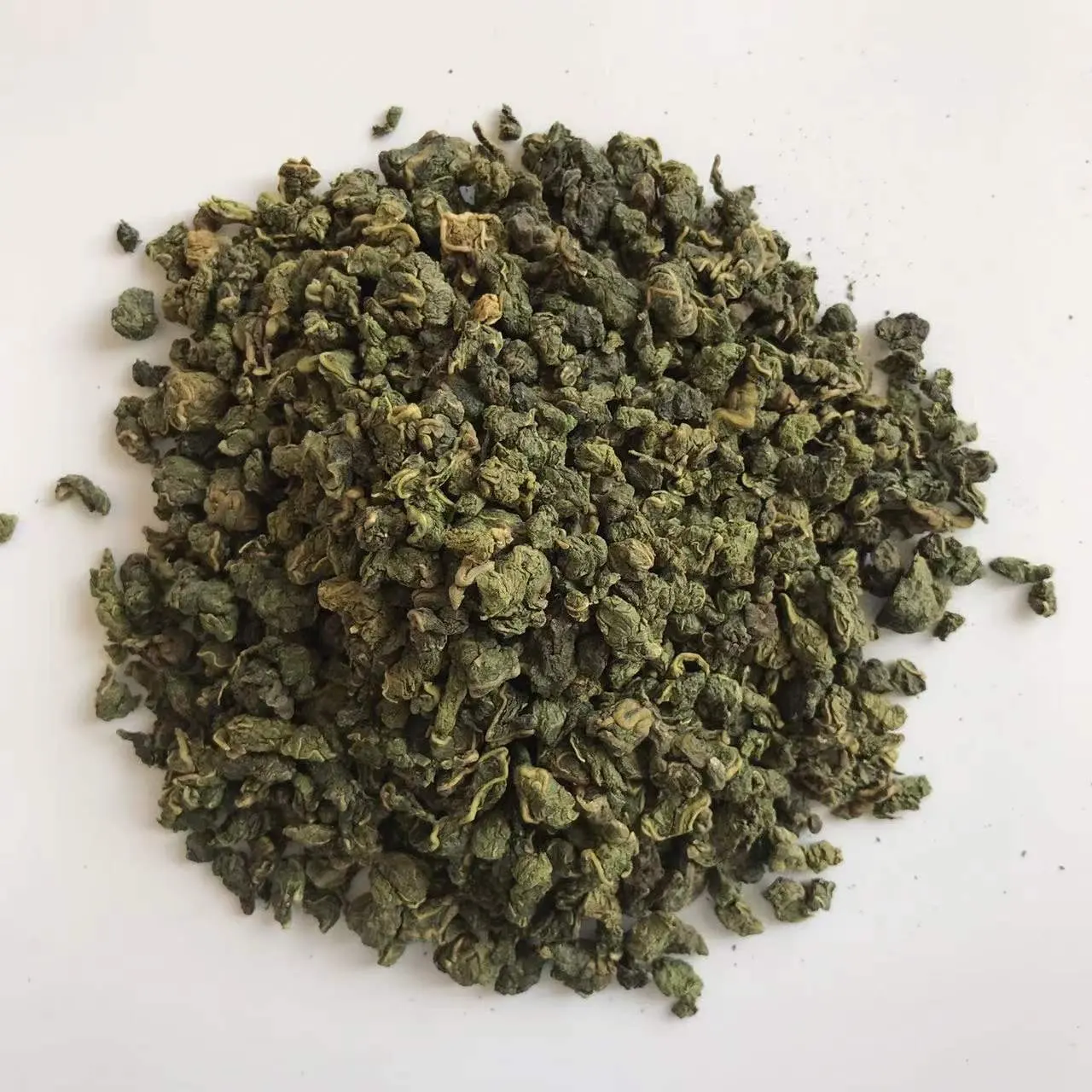


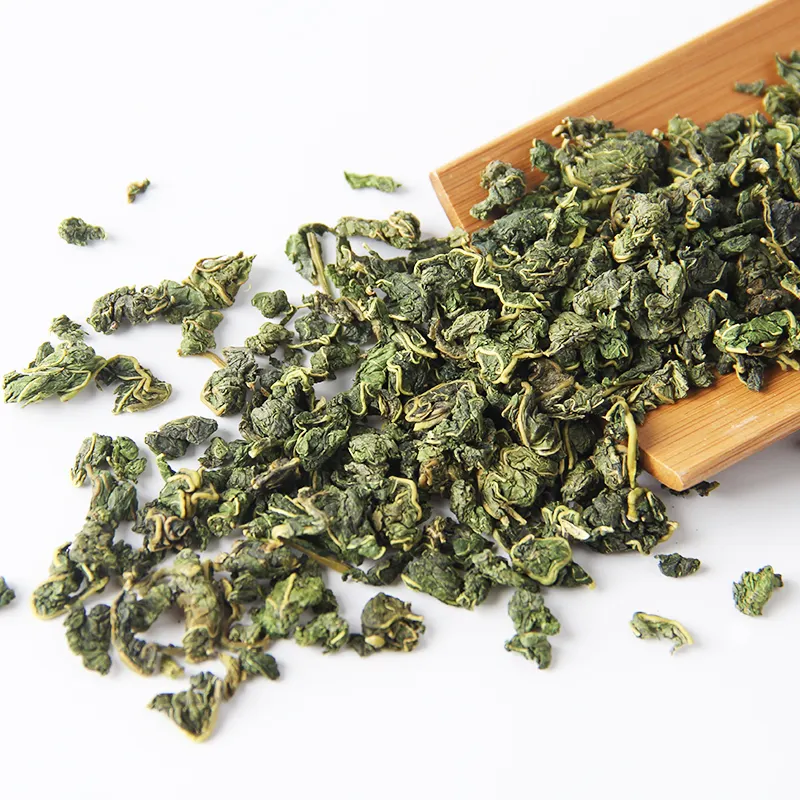
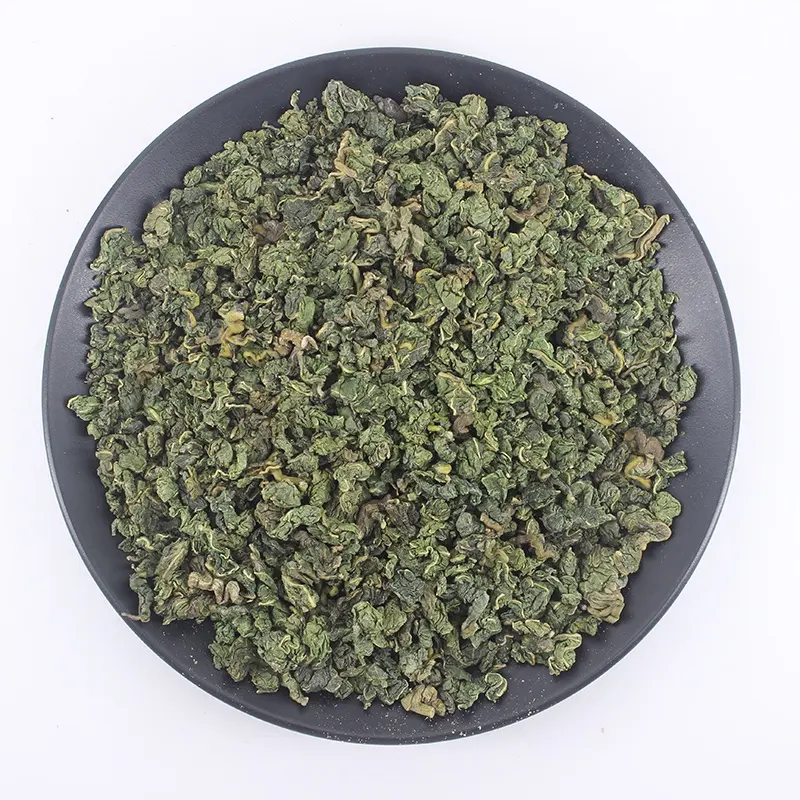
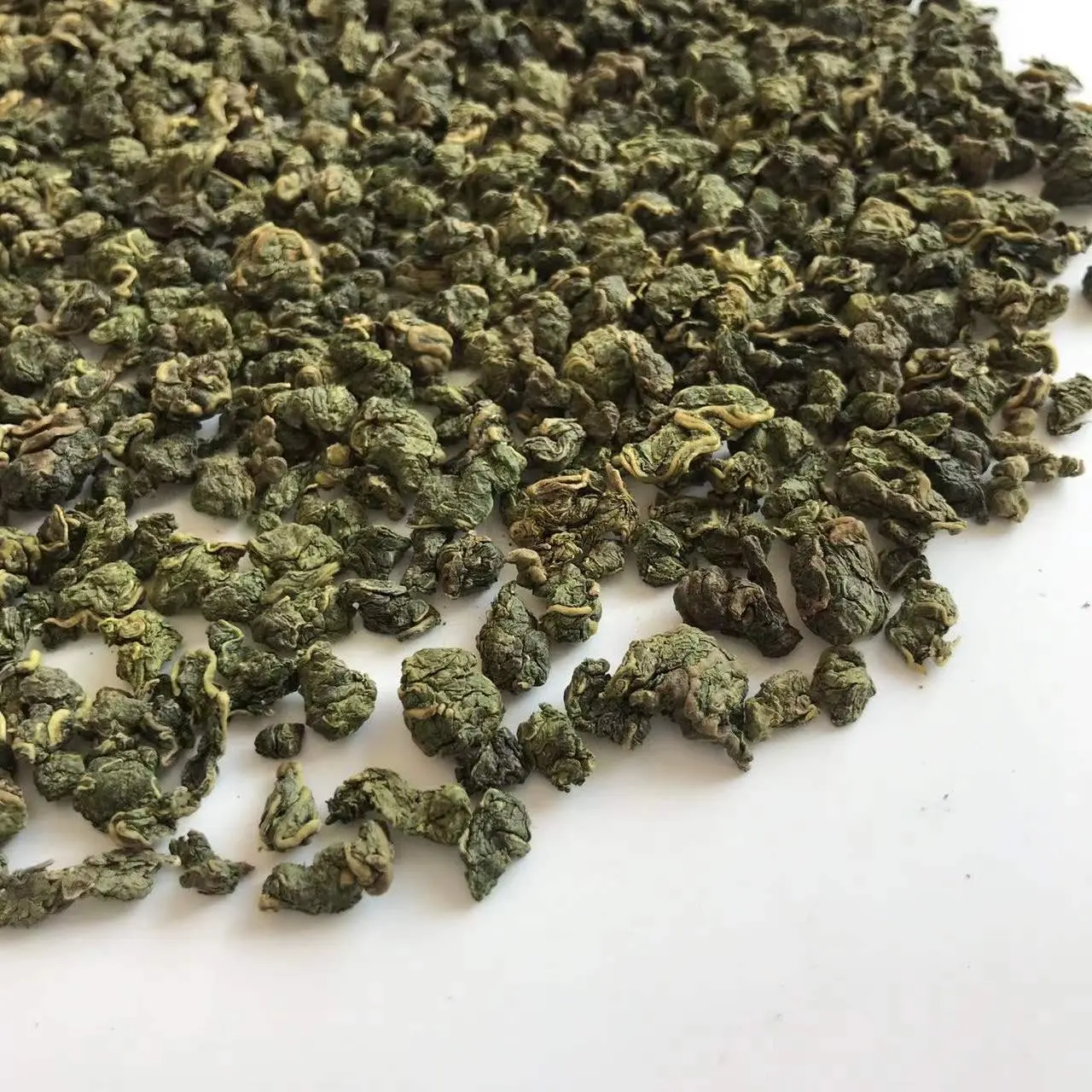


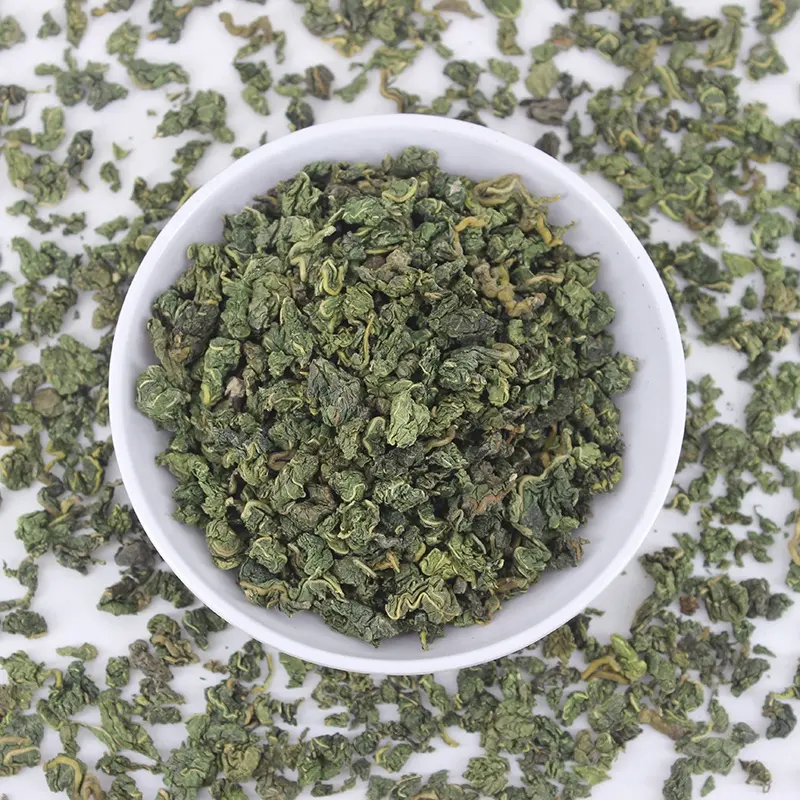
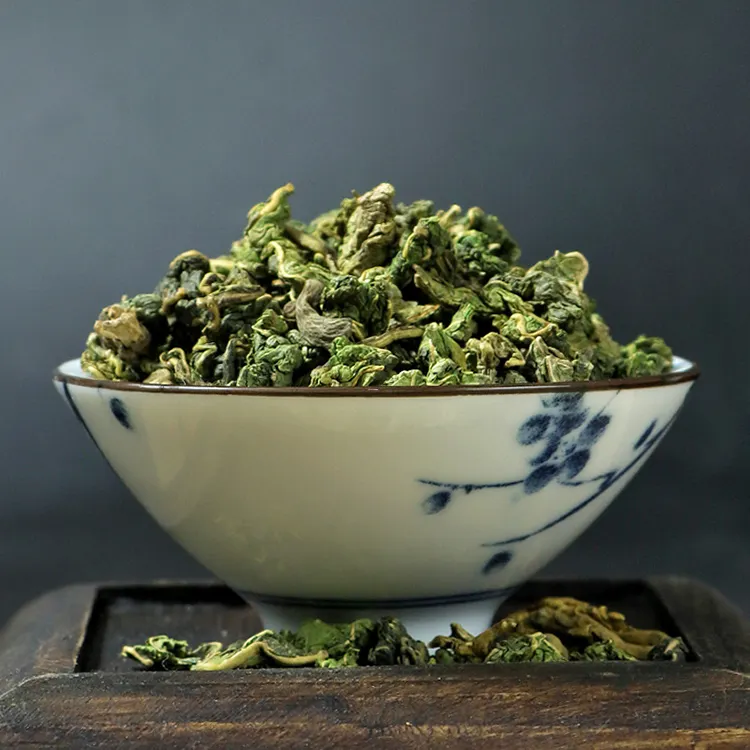
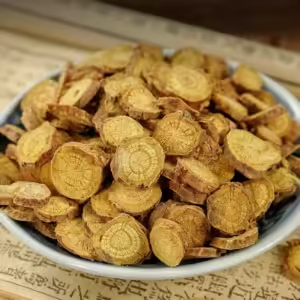
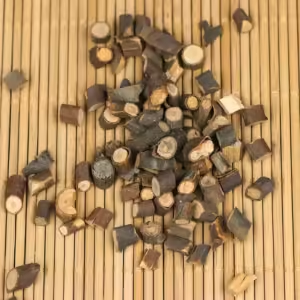
Ulasan
Belum ada ulasan.